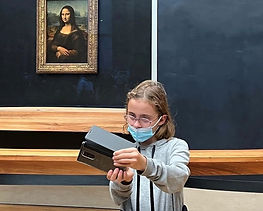
The Importance of Being Beautiful
Mary Neale-Smith
The word beauty comes from the Old French beaute, originating from the Latin bellus meaning pretty or handsome. The Latin word was associated with women or children, and when used to describe men, it implied insult or irony.
In Webster’s (1828) Dictionary of the English Language, beauty was defined as ‘whatever pleases the eye of the beholder’. So today, as mainstream beauty has to conform to capitalism and the patriarchy, the beholder is male. Men are the judge, jury, and executioner when it comes to defining beauty.
The definition and concept of beauty has transformed throughout the centuries. In The Beauty Myth, Naomi Wolf (1991) writes about how women have transitioned away from being economically and politically reliant on men. But, for every action, there is an equal and opposite reaction. The obligation became ingrained in our society that women ought to be beautiful. This counterforce arose as women were no longer bound to the narrative of domesticity and chastity. One waste of time had to be replaced by another.
We believe ‘beauty’ is something that can be achieved. It is not about chance or luck. We ignore the role of genetics and natural variation. Instead, we have been persuaded that beauty is a product of a woman’s hard work, investment, and perseverance. So it is imposed on us all, expected of all women, regardless of their profession, relationship status, or desire to be judged on a more meaningful characteristic.
The irony is that the idealised standard of beauty right now is being “natural”. To look like you haven’t had to try. The cosmetics giant Glossier can market products as ‘glow-enhancing’ and then made a fortune in charging extortionate prices for essentially sheered out products. By 2024 the skincare industry in the UK is predicted to be worth $24 billion, reflecting women’s investment into countless regimes and routines to achieve the goal.
All the hard work and expense in trying to achieve the perfect ideal of beauty has been rebranded. The old-fashioned message splashed across magazines telling women to spend time and money to look better for their husbands has been seamlessly transitioned into telling them to do it for themselves. The magical phrase ‘self-care’ has turned the hours and pounds spent on your appearance into something progressive.
What is difficult about this discussion is that it is not the desire to be beautiful that is wrong. Navigating these waters is hard when it can appear to be unfeminist to criticise any decisions women make around their bodies. The problem is that beauty has become a requirement, and the beauty standard centers around narcissism and feeds off our insecurities.
When we look in the mirror, we might see things we like, but more often than not, we focus on the parts that we don’t. These parts are often natural and how they ought to be, but we get manipulated into believing they need to be worked on. That they need improving.
Instead of raising meaningful and important questions about these beauty standards and their origins, we are trying to expand them. We believe that beauty is such an important attribute that we all need to feel beautiful. It’s placed on an untouchable pedestal.
As a result, the ideal of beauty has evolved in some positive ways. It has become more inclusive and diverse – the body positivity movement works to enable people of all shapes and sizes to be included in what is beautiful. But, the underlying assumption: beauty is, and should be, of fundamental importance to us all. Why can’t it matter less?
The beauty ideal turns us into hamsters on a wheel. Although we are continuously running, we never get anywhere because perfection cannot be reached. And we keep running because participating and trying to achieve the beauty ideal delivers a sense of power.
But this power is a facade. Often the only type of power women are pushed to pursue. It is a power rooted in the male gaze and male opinions. Yet, it is not a power over men but a power to attract them. With beauty comes power, perhaps it’s a privilege, but the privilege is not without consequences.
The historical progression of professions reliant on beauty show just how the beauty ideal and the power associated with it have changed over time. Previously, when beauty mattered less, it was used by a class of working women in jobs like dancers, models, and sex workers, which were low paid and unrespected. The new reality is being beautiful is valued above all else. Some women have managed to make money out of it. Porn, modelling and being a social media influencer are some of the few industries where women earn more on average than men.
But using your beauty to make money doesn’t feel like stepping off the wheel. In fact, believing you are benefiting from the beauty ideal feeds it more. As Margaret Atwood observes, “even pretending you aren’t catering to male fantasies is a male fantasy”.
The beauty ideal will not change while we conform to it, but not conforming is often too great a sacrifice. Being sold the promise that beauty can and should be attained also makes many people very wealthy – so it’s not going anyway. For the time being, it seems we are damned if we do and damned if we don’t.









